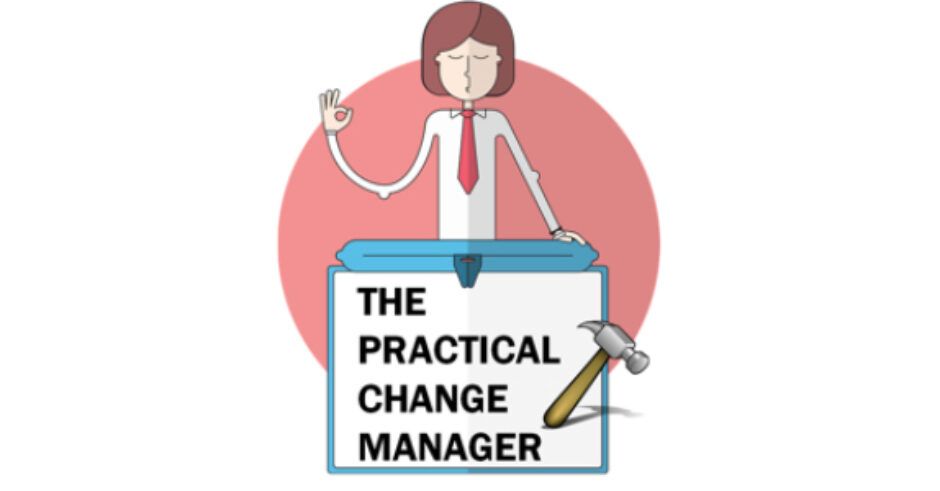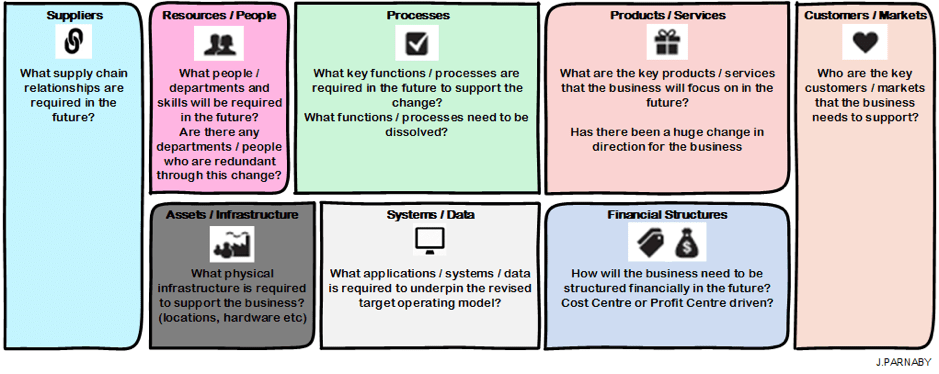Episode 2/9: Capturing Change Impacts
“It’s more than understanding what the change is, it’s about understanding what it means”
In the last episode, I discussed the importance of having a defined Change Framework as your blueprint to success. You can read more about the framework that I’ve created along with some examples here.
In this episode, I’m going to explore the first two stages of the framework but predominately Stage 2: Change Definition which is all about defining the change, most notably capturing change impacts.

Stage 1: Establish a Vision
Before any change impact can be captured from the business the Change Manager must completely understand what the changes are before any assessment is made, I know that sounds kind of obvious when you write it down but never the less it’s critical and sometimes forgotten. Before you even contact the business make sure that you spend time with the Business Analysts or Process Owners who have designed/documented the specific change in the first place. Remember these resources have usually been involved right at the beginning running requirements gathering workshops or TO BE Process workshops if you have been lucky you may have been involved in those at the start as well which will give the change team a solid foundation to work from.
The vision should technically be facilitated by the Programme Manager and should be readily available for the Change Managers to use and understand. However, sometimes this information doesn’t exist. In the past, I’ve had to create these mainly to provide me and my team some steering and guidance when talking with the impacted employees. I like to think drafting the vision it is a bit like writing a story with a beginning, middle and end:
- Beginning: Why is the change happening? What is the driving force behind the change? What are the triggers?
- Middle: How will we transition the change? Multiple stepping stones or a big bang?
- End: What does the TO BE look like, what is our target position?
An effective way to capture this vision is through a Target Operating Model (TOM). I’m not covering the TOM process in detail in this series, however, the visual below highlights typical components of a Target Operating Model and how each component, if mapped properly, will provide an extremely useful insight for the Change Manager to help relay that vision to the business. My point here is to try to ask for this information before you start the change definition process to help save time if it doesn’t exist then spend some time crafting a high-level vision statement so at least the Change Team is on the same page.
Stage 2: Change Definition
Great, you now understand the vision of what the business is trying to achieve which means you know what the change “is” but now it’s time to understand what the change “means” to individuals, teams and the organisation. This is understood by using a process of formally capturing change impacts. The definition of a change impact is “identifying the potential consequences of a change, or estimating what needs to be modified to accomplish a change”. Essentially, they are statements recorded to give the Change Team something tangible work from and to design effective change plans against. Without change impacts, the changes plans are likely to be a generic set of activities and not tailored to the specific groups which are unlikely to help the people even begin to go through the change curve.
Enough theory, let me break this down with a practical example:

Now we know what the change is we can set-up Change Impact Workshop(s) with the key stakeholders including the designers of the change and with some of the recommended business people who can provide a lens on what the changes mean to them. The outputs from these workshops is to formally record change impacts into a log, this information must contain enough variety so that you can analyse it to produce the Change Impact Assessment
So going back to the case study of Purchase Invoices the below is a rough guide on what type of information should be captured through this process:
- What project is enabling the change for this impact? If your project has multiple streams or you’re working across multiple projects, then having this will always link the change impact to the project which is driving the change
- What end to end process does this impact reside in? This would fall into the Procure to Pay (Procurement) process
- What functional division does this impact reside in? There are multiple functions such as Stores and Finance
- What stakeholders are impacted by this change? Using the case study likely candidates would be Finance – Accounts Payable, Store Managers, Store Administrators, Suppliers). Note: Ideally list out one change impact per impacted stakeholder group to aid analysis.
- When will this change impact the stakeholders? 6 months’ time – Note: This would likely be a date
- What is the change impact type? Out of the following impact types does this impact need to be managed before, during or after the cutover.
- Type 1 – Must be mitigated before go-live
- Type 2 – Must be mitigated during go-live
- Type 3 – Must be mitigated post go-live
- Type 4 – No dependency on go-live
- How many people in the organisation are impacted? 150 out of 1000 – This helps quantity the size of the impact and bandings can work well here.
- Who is accountable for making this change happen? The Finance Director (Sponsor)
- What is the benefit of the change to impacted stakeholders? Centralised managed of invoices freeing up Store Managers and Store Administrators time. Increased financial controls by having approvals done electronically at the front end of the procurement process.
- What are the likely barriers to change? Loss of control within stores, Finance teams to utilised increased technology hardware e.g. scanners
- What are the dependencies for enabling this change? New scanning solution and procurement module within ERP system.
- What engagement activities would help mitigate these impacts? Store Managers conference to highlight the new procurement solution ensuring change benefits and impacts are understood, targeted communications in local publications and intranet channels, training of the new procurement solution to include education around invoices and where they go. Adjustments to Finance AP clerks to include scanning duties. These would be broken down across the following categories to aid analysis (Stakeholder Engagement, Communications, Training, Org Design, Business Preparation)
I’ve recorded Change Impacts in a variety of formats in the past, from Excel Spreadsheets, SharePoint Lists and even bespoke cloud based systems. Below is an example of a spreadsheet Change Impact Log highlighting how the data can be structured to aid analysis in the next stage.
What techniques do you find work when performing change impact workshops? What other key pieces of information do you record when capturing Change Impacts? Would the above Change Impact Log structure work for your change initiatives? Please get involved and comment to engage with the transformation community.
Next time I’ll be discussing how we convert the change impact data into a Change Impact Assessment and how these can be used to start to build awareness across the senior business stakeholders, more importantly sowing the seeds by creating your very own Change Network.





